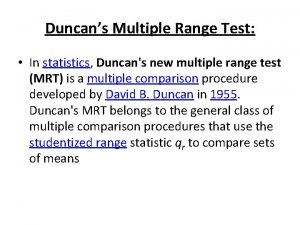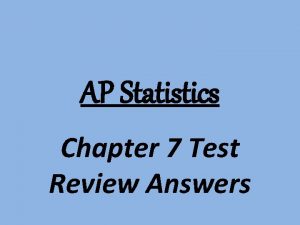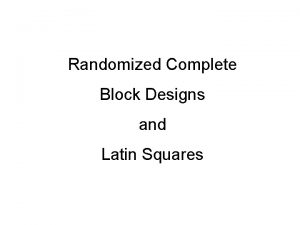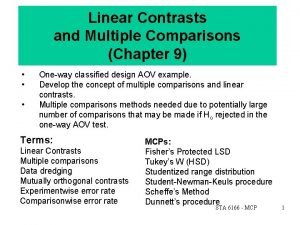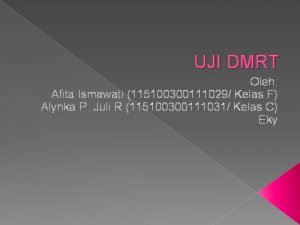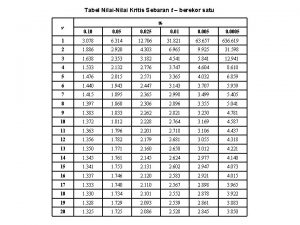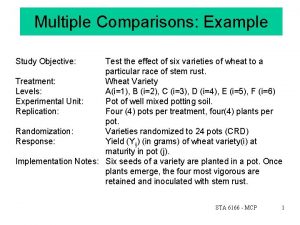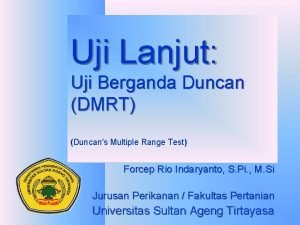Duncans Multiple Range Test In statistics Duncans new







- Slides: 7

Duncan’s Multiple Range Test: • In statistics, Duncan's new multiple range test (MRT) is a multiple comparison procedure developed by David B. Duncan in 1955. Duncan's MRT belongs to the general class of multiple comparison procedures that use the studentized range statistic qr to compare sets of means

• If there is significant difference between the treatment means of the factor with respect to that component in terms of the response variable, then one can use Duncan multiple range test to compare the means of the treatments of that component in that model.

• Duncan’s Multiple Range test is convenient, because it combines the ease of hypothesis testing with the power of testing each mean to each mean. • It is used to compare the means of treatments of that component in that model. This test was developed by Duncan (1955)

• The steps of this test are: • Step-1: Arrange the treatments averages in the ascending order from left to right. • • Step-2: Find the standard error of each treatment mean. •

Treatment No. Medium concentration Time for shoot regeneration No. of test tubes showing response Frequency of shoot regeneration (Days) Shoot Length (cm) (%age) BAP (mg/l) MS 1 1. 0 15 d± 1. 166 8 a± 0. 632 85 3. 9 a± 0. 116 MS 2 2. 0 25 c± 0. 40 5 b± 0. 489 50 2. 7 b± 0. 063 MS 3 3. 0 12 e± 0. 40 9 a± 0. 063 90 4. 2 a± 0. 135 MS 4 4. 0 32 a± 1. 280 2 c± 0. 282 25 1. 6 c± 0. 069 MS 5 5. 0 28 b± 0. 632 2 c± 0. 282 30 1. 3 c± 0. 028 LSD - 2. 8601 2. 085 - 0. 3008

LSD test When you run an ANOVA (Analysis of Variance) test and get a significant result, that means at least one of the groups tested differs from the other groups. However, you can’t tell from the ANOVA test which group differs. In order to address this, Fisher developed the least significant difference test in 1935, which is only used when you reject the null hypothesis as a result of your hypothesis test results.

The LSD calculates the smallest significant between two means as if a test had been run on those two means (as opposed to all of the groups together). This enables you to make direct comparisons between two means from two individual groups.
